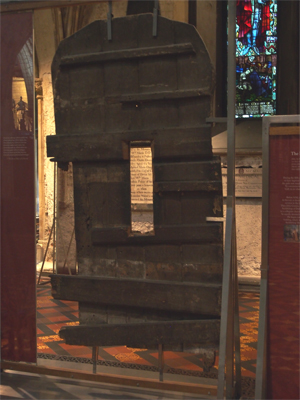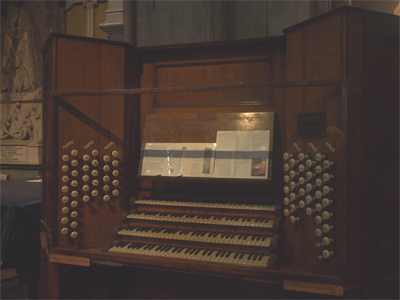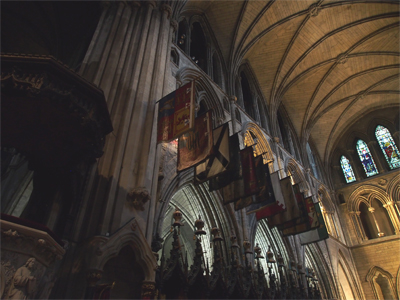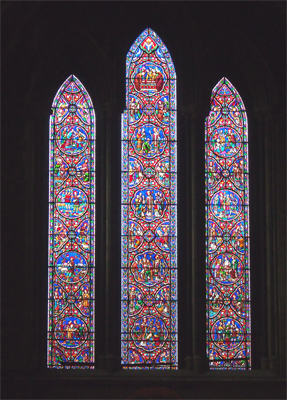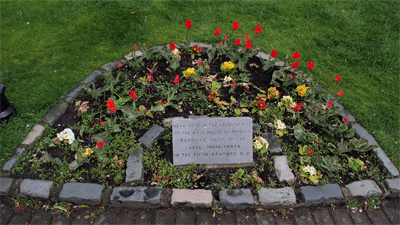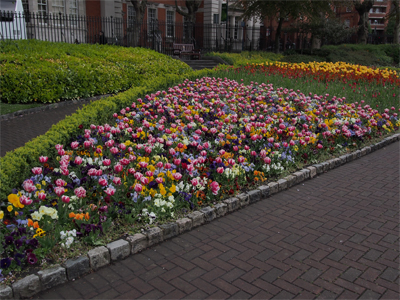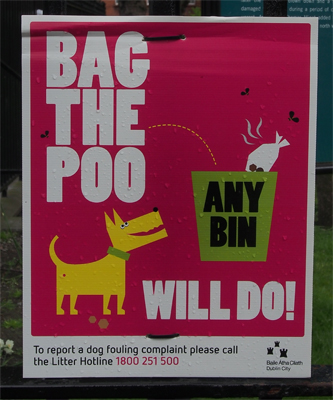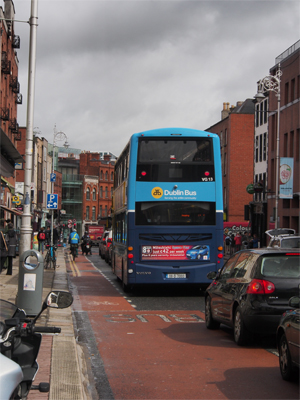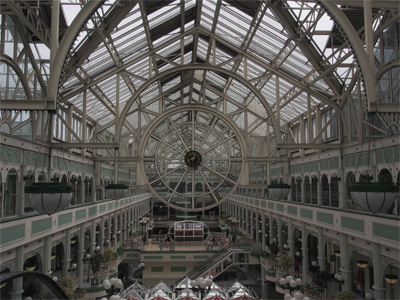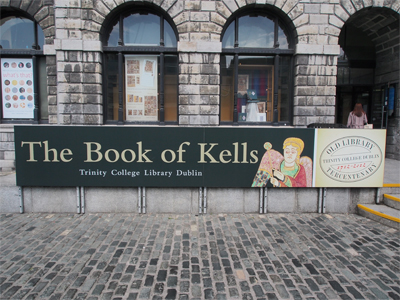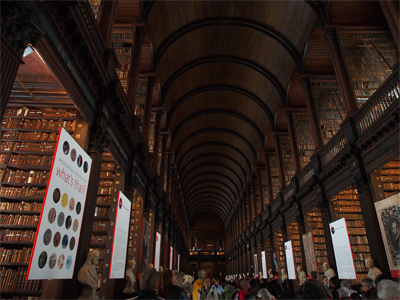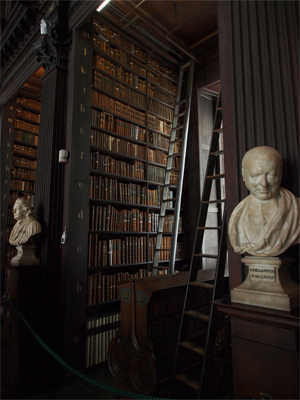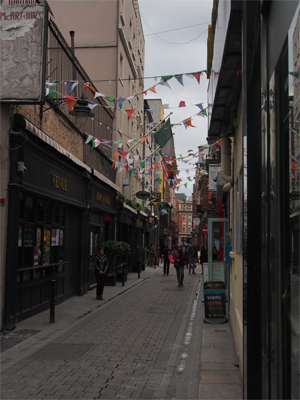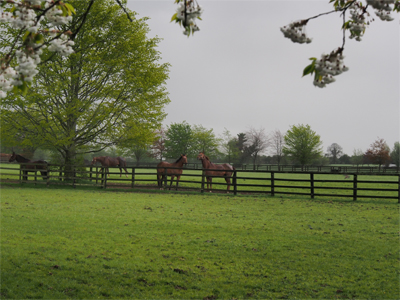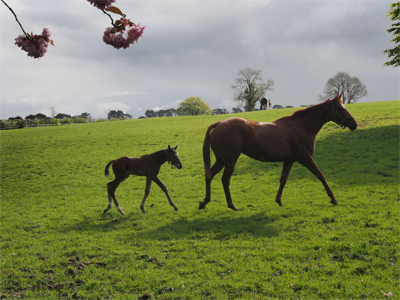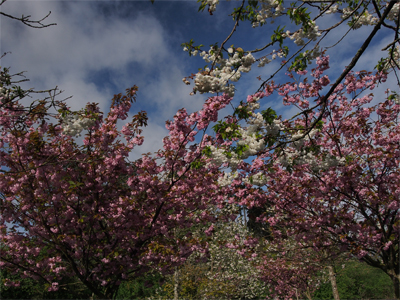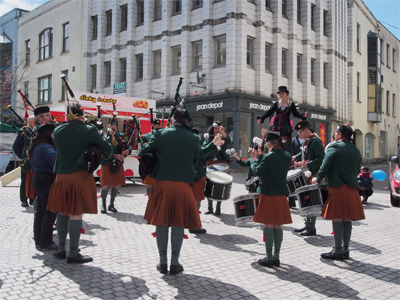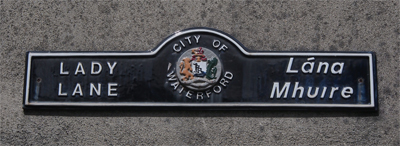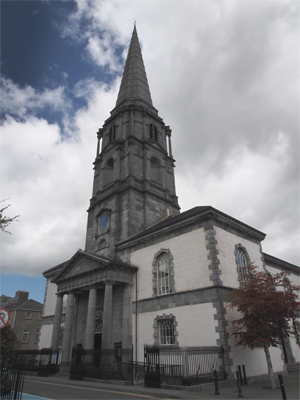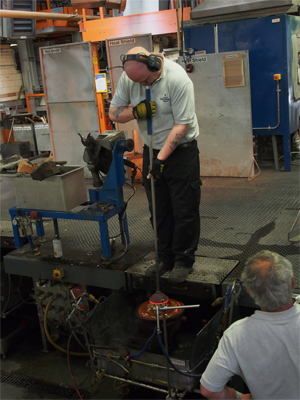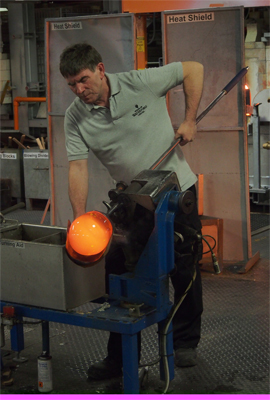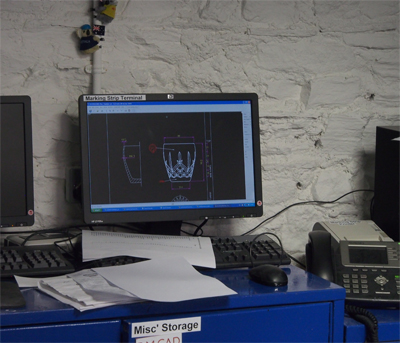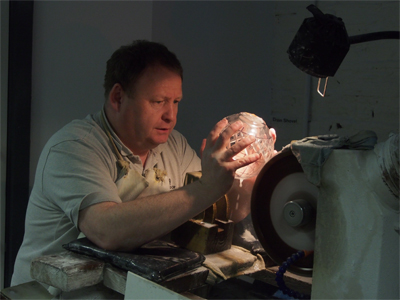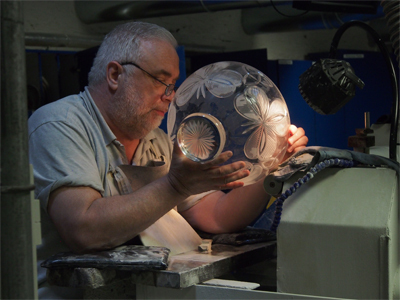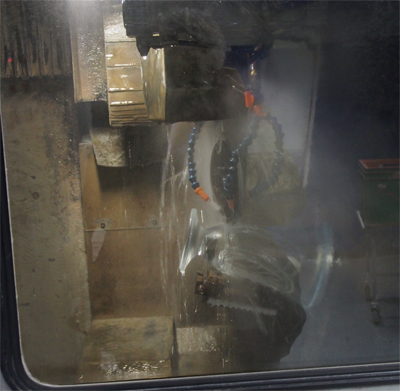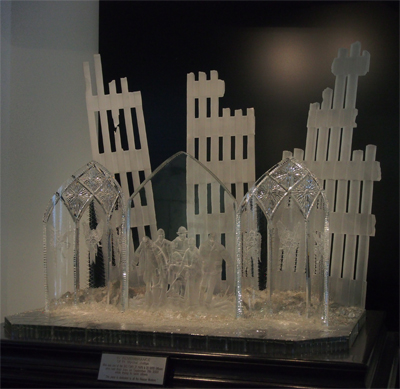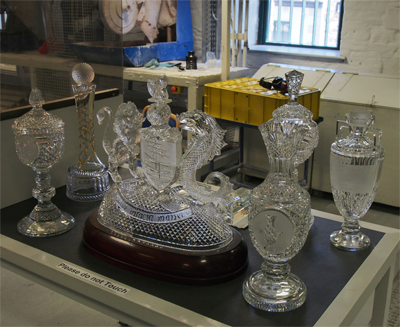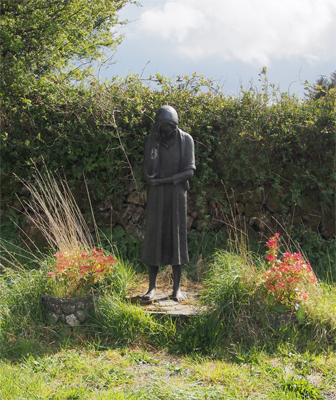Thurs., 5/9/13 - Dublin
It was raining again this morning but we walked to St. Patrick's Cathedral anyway. The rain was intermittent and the wind blew cold. The cathedral sits on an entire block and has a lovely park beside it. In the park is a plaque referencing the well (no longer there) where St. Patrick began baptizing converts from Viking pagan beliefs to Christianity in the fifth century. The Normans built a stone church on the site in 1191 and rebuilding and additions have occurred over the years. Jonathan Swift was Dean of the Cathedral from 1713 to 1745. Some of his Books of Prayer and his sermon on sleeping in church are on display. He is buried under the floor with his wife.
Inside the sanctuary (nave, transepts, and chapels) are numerous plaques, busts, and statues of "The Right Honorable" this and that and memorials to the servicemen of many wars. In the north transept is the original door from 1492. The Earl of Kildare cut a hole in the door and stretched his arm through to grasp the hand of the Earl of Ormond, his enemy who had taken refuge in the Chapter House. This act of reconciliation ended the bitter feud between them. From this event comes the phrase, "chancing your arm." The door is called the Door of Reconciliation. On display are ancient slabs of stone with Celtic crosses and a bell dedicated by the Huguenots who used one of the chapels. Above the choir rows are the banners and hatchments (armor) of the Knights of St. Patrick, a chivalric order founded by King George III in 1783.
St. Patrick's Cathedral
|
St. Patrick's Cathedral - lots of important people |
St. Patrick's Cathedral - Door of Reconciliation
|
St. Patrick's Cathedral - old organ |
St. Patrick's Cathedral - banners and hatchments |
St. Patrick's Cathedral
|
St. Patrick's Well site |
St. Patrick's Cathedral grounds
|
We need this for our area
|
Street Scene |
St. Stephen's Green Mall - glass and iron atrium
|
This afternoon we checked out of our hotel room and left our bags at reception and went for a walk to St. Stephens Park and through the three stories of shops in Stephens Green Mall. The building is mostly glass and iron with a huge atrium. |
Fri., 5/10/13 - Dublin - Burlington Hotel
|
|
|
Long Room of the Trinity College Library
|
Long Room Displays |
Long Room
|
Gale's traced name in Futhark - Viking rune letters |
Street scene
|
|
Sat., 5/11/13 - Dublin to Cork
|
|
Irish National Stud Farm
|
Irish National Stud Farm |
Irish National Stud Farm |
Irish National Stud Farm
|
Cherries in bloom at the Irish National Stud Farm
|
Japanese Garden at the Irish National Stud Farm |
|
We arrived in the Viking seaport town of Waterford and walked, in the rain, into the pedestrian old part of town for lunch. We found a small shop and had homemade potato leek soup. We rejoined the group for a tour of the Waterford Crystal factory. Crystal has been made here since the 1700's. In the 1800's England imposed a tax on their products, which put them out of business. The Republic of Ireland (the part we are currently touring) restored the factory in 1920 but it went bust again. It is opened again now but creates mostly trophies, specialty pieces - like the New Year's Ball that drops in Times Square.
|
|
Bagpipe band in Waterford
|
Another bilingual sign |
Christ Church, Waterford
|
|
Blowing Waterford Crystal |
Blowing Waterford Crystal
|
Blowing Waterford Crystal
|
Computer-assisted design |
Etching the crystal
|
Etching the crystal |
Computer driven machine etching
|
Oops!! |
Waterford Crystal
|
Waterford Crystal |
We made another quick stop to look at a typical country graveyard with an unnamed, common grave for victims of The Hunger (or Famine). One million (one of every three) Irish people, mostly children, died in the 1840's as a result of the blight that rotted their potatoes. There are crosses like this all over Ireland.
|
Another Famine Memorial
|
Another Famine Memorial
|
Gorse |
We finally arrived at a very modern hotel, the River Lee Hotel, in Cork and walked into town to find dinner. We ate at the Restaurant 14A in old town. It was not a pub per se and we had roasted lasagna. Cork is a growing city and has a university that is the second largest in Ireland.


